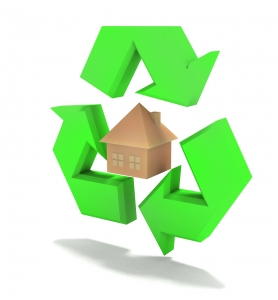 Families can reduce their utility costs (saving hundreds or even thousands per year) while increasing performance by taking some basic steps to make their home more energy-efficiency. And with the cold winter months approaching, there’s no better time than now to make these critical improvements to your home. Even if you ‘think’ your home is energy-efficient, there are probably some additional steps you can take to improve it. Keep reading to learn 5 simple ways to make your home more energy-efficient.
Families can reduce their utility costs (saving hundreds or even thousands per year) while increasing performance by taking some basic steps to make their home more energy-efficiency. And with the cold winter months approaching, there’s no better time than now to make these critical improvements to your home. Even if you ‘think’ your home is energy-efficient, there are probably some additional steps you can take to improve it. Keep reading to learn 5 simple ways to make your home more energy-efficient.
#1) Insulation
Arguably, one of the most important steps towards creating an energy-efficient home is to properly insulate the walls, attic and basement/crawl space. Drywall alone isn’t enough to prevent thermal energy from escaping. While it certainly helps, some of your home’s heat, or cool air during the summer, will pass through uninsulated drywall where it escapes your home. You can help trap it inside your home, however, by properly insulating the walls, attic and basement or crawlspace.
Be sure to check out our previous post for a comparison of blown cellulose vs fiberglass insulation.
#2) Weatherstripping
A second technique for creating a more energy-efficient home is to install weatherstripping around your doors and windows. Some people assume that weatherstripping is only necessary on the bottom of your doors, but for maximum benefit you should also install it on the top and side door jambs.
Weatherstripping is cheap, easy to install, and will quickly pay for itself in the form of reduced monthly power bills. Just pick up some self-adhesive weatherstripping from your local home improvement store and apply it to your doors and windows.
#3) CFL Lighting
Are you still using the old fashioned incandescent bulbs to light your home? Although they are the cheapest, they are also the least energy-efficient –and they die the fastest. A better option is to replace the fixture bulbs in your home with compact fluorescent lighting (CFL). They use a fraction of the energy as their counterpart and last thousands of hours longer.
#4) Wash Clothes Using Cold Water
You might be surprised to learn that washing clothes with cold water will reduce your home’s energy usage. Each time your washing machine goes through its cycle with hot water, it must heat the water — which uses either electricity or gas — before pumping it into the basket. The truth is that cold water cleans clothes just as well but without using as much energy.
#5) Change Your Air Filter
I think we’ve all been guilty of allowing our home’s air filter to go unchanged for longer than it should. Once the filter begins to gather dust, dirty and debris, however, it won’t be able to effectively vent air; thus, reducing the home’s energy-efficiency. Try to get into the habit of changing it about once every 30 days for optimal performance.